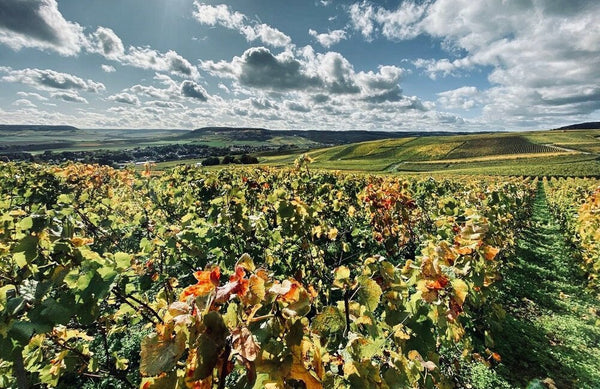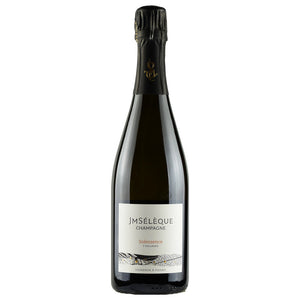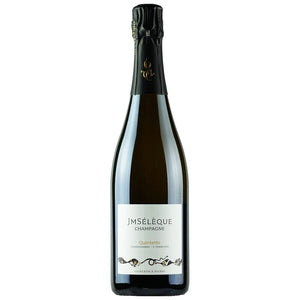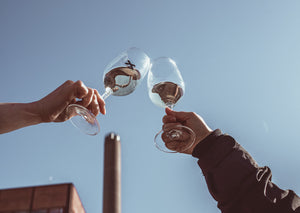
Champagne JM Sélèque
When you head south from Épernay, you'll find the village of Pierry in a 10-minute drive. This Premier Cru-level area, overshadowed by many more famous villages, is located in the very southeastern part of the Vallée de la Marne in Coteaux Sud d'Épernay, where, going east, it meets Coteaux de Suis in the Côte de Blancs region. The orchards in the village of Pierry face south and there the focus is especially on growing Meunier, as the soil has a lot of shale clay suitable for grapes on a limestone subsoil. The village is tiny, with only 1,210 inhabitants, and in addition, the village is home to 109 hectares of vines.
In 1925, Henri Sélèque moved from Poland to France with his father and farmed for several years with his wife Françoise Bagnost. Their son Richard wanted to work with wines and studied to become an oenologist. The family's first vineyards were planted in Pierry and Moussy in 1965. The first wines from their own vineyards were produced in 1969 together with a local cooperative. The cooperation was possible because the director of the cooperative was Henri's father-in-law Jean Bagnost. However, Richard's dream was to be completely self-sufficient in wine production. He acquired not only his own press, tanks and barrels for the farm, but also his own bottling and re-corking line, and started producing and selling champagnes produced on the farm in the 1970s. Richard's son Jean-Marc returned to the farm in 2008 after first gaining experience in e.g. from USA and Australia. He took responsibility for the farm's winemaking and modified the orchard work in a direction that was more respectful of the grape growing environment. At first, the workers, who were used to working with Jean-Marc's father in the nurseries, resisted the changes, as manual work required more time than spraying herbicides. However, after noticing the changes in the paddocks, they understood what Jean-Marc was after, and today are extremely proud of the work they did.
In 2015, Jean-Marc and his wife Oriane built a new cellar on the farm, which means that the wines on the farm move by gravity and the need for electricity is low. Today, Jean-Marc and Oriane cultivate 9 hectares of vineyards, of which 50% consists of Chardonnay, 40% Meunier and 10% Pinot Noir. Shelters can be found on 45 different plots in Coteaux Sud d'Épernay (Pierry, Moussy, Épernay), Vallée de la Marne (Dizy, Boursault, Mardeuil), and Côte des Blancs (Vertus). The average age of the vines is about 40 years and the yields obtained from them are between 55-70 hl/ha.
The soil in the vineyards is managed not only by plowing it with rented horsepower and tractors, but also by allowing other vegetation between the rows of vines. Five full-time employees work at the shelters all year round, whose operating methods follow the principles of Lutte raisonné. Biodynamic preparations are also used. Pierry's, Moussy's, Epernay's and Dizy's plots are completely managed with biodynamic methods, and other vineyards organically, although in some years when the risk of mold is at its worst, Jean-Marc prefers to spray synthetic chemicals once, rather than burden the soil with excessive use of copper sulfate.
From the orchards, the grapes are brought to the farm chilled. In the cellars, special attention is paid to the gentle pressing of the grapes and the selection of the juices, and the wine is stored as little as possible. Basic wines are allowed to ferment slowly, and only about 20% of fermentation batches have to add external yeast to ensure successful fermentation. The wine batches mature both in steel tanks, in egg-shaped containers cast from cement, in sandstone amphorae, and in oak barrels of different sizes. Malolactic fermentation may or may not occur depending on the vintage - in 2018, only 15% of the production was malolactic. The wines are not clarified or filtered. In the future, a second fermentation will be achieved with the help of a strain of yeast isolated from our own barns. Sulfites in the final wines are around 30-35 mg/l. The wines are bottled and recorked on flower and fruit days according to the biodynamic calendar, and cane sugar or concentrated grape juice is used as dosage.
More than half of the farm's production is sold outside of France. In addition to his own vineyards, Jean-Marc buys 5-10% of grapes from other farmers in the villages of Pierry and Dizy, which are used in the wines of the Solessence series.
The farm's annual production is around 80,000 bottles. The producer has Haute Valeur Environnementale and Viticulture Durable en Champagne certificates.



